
| | |
.jpg) School of Living News June 2019 |
|
|
Welcome to our School of Living electronic newsletter where you can catch up on what is happening in our land trust communities and SOL committee work.
|
|
|
INTERGENERATIONAL FRIENDS FAIR 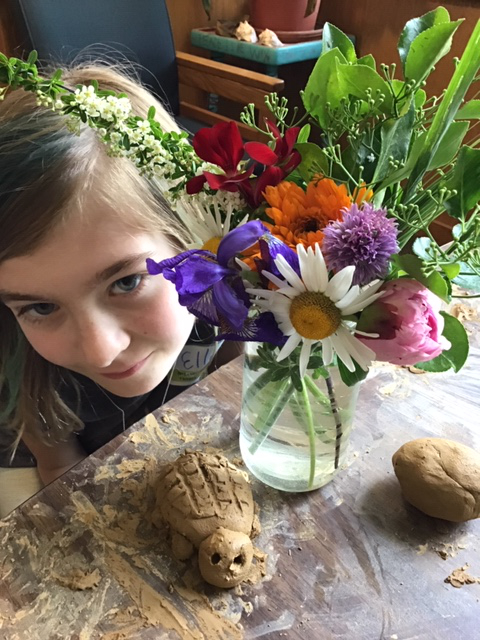 Image courtesy of Turtle Way
Deb Fisher and I contributed to and helped organize the recent first annual Intergenerational Friends Fair at the State College Friends School. The idea was first conceived by Lori Pacchioli, Friends School Director of Advancement, at a retreat in the fall of 2018. The idea was for various social service organizations and Fellows of the ILI (Intergenerational Leadership Institute) to develop interactive exhibits and/or activities of interest to multiple generations and to offer them as part of a community-wide fair.
Communities, which schedule intergenerational events, which are fun and/or meaningful, on a regular basis are more resilient and functional as communities. Such events are beneficial to all ages. Considering the increased isolation and/or depression among many senior citizens, as well as our youth, it is my belief that scheduling such events is essential in today’s world! So the fair on June 1st at the Friends School included such activities as “making a home-made jump-rope” out of stands of real hemp, “Doing Good With Wood” (crafting a kazoo out of wood as a basic wood-working workshop), a facilitated discussion of “family health”, a yoga class and dance workshops. I participated in the family health discussion, which was facilitated by a nurse, and had a productive discussion sitting at a small table with a high school student and a recent college grad. Deb Fisher had an art exhibit/workshops set up for folks to mold turtles out of clay and to engage in the practice of flower arranging. These activities are symbolic of Turtle Way, which offers intergenerational learning experiences in art, nature and sustainable living skills at Julian Woods. One intergenerational project with the ILI is called “Speak Your Peace!”, which offers workshops in conflict resolution and mediation, as well as various programs related to social justice and “Circles of Trust”. The Circle of Trust are similar to the SOL “Men’s Circles” and “Women’s Circles”, which have been held at past Quarterly Meetings. The various parts of this project are facilitated by Marie Hamilton, Rev. Dr. Donna King, Lorna Arocena and myself. Symbolic of “Speak Your Peace!” we offered a drum circle to participants of the fair. “What does a drum circle has to do with speaking peace?” you may ask. Check out the following post to learn more! 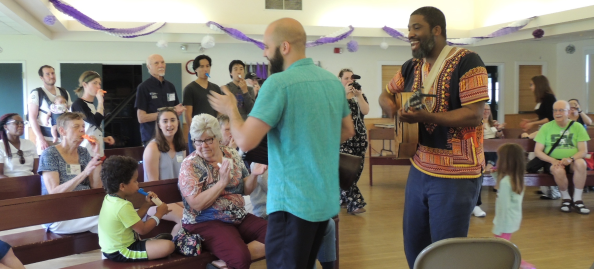 Image courtesy of State College Friends School
The fair ended with a lively concert during which a well-known area musician, Eric Ian Farmer, led us all in some songs from the 60’s, while all of the kids present played their newly fashioned kazoos. About half of the audience were inspired to get up and dance – even those of us, who seldom do much dancing any more! Sunny Rehler |
|
|
DRUMMING AND COMMUNICATION
There are many similarities between drumming and good communication skills. Matt Price, who has many years of experience leading such circles, facilitated the drum circle at the Friends Fair. Matt’s brochure describing drum workshops he has led in the past, explains that such workshops build confidence, mindfulness and sensitivity to the others. These are all skills that are essential to good communication and conflict resolution and are thus also included in the curriculum of our conflict resolution/mediation workshops.
The very first step for any participant in a drum circle to contribute a pleasing, rhythmic sound to complement the other participants is to LISTEN! Listening is also the first essential step for two parties desiring to resolve a conflict peacefully – they need to LISTEN non-judgmentally to each other! More generally we could note that successful and functional communities are always those in which the members have good listening skills and the ability to respect for the needs of others in the community. 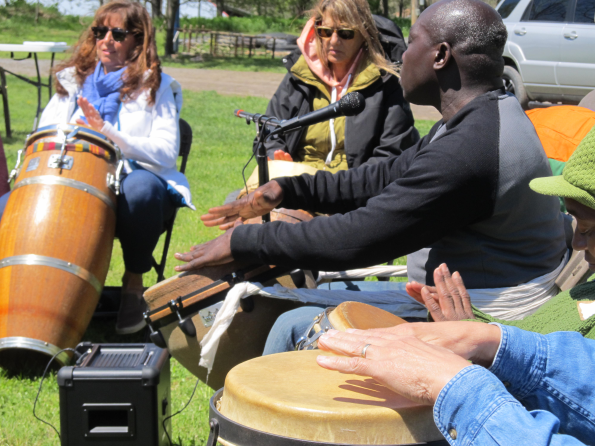 Image courtesy of Three Leaf Farmden
During the drum circle, Grace Hamilton, an AfroAmerican participant (also an ILI fellow), mentioned that percussion was used before the Civil War by slaves in the south to communicate with each other in a type of coded language, which their masters could not understand. This irritated the masters so much that drumming among their slaves was forbidden!
After doing some research, I discovered that indigenous peoples in Africa and Asia have also historically used drumming as a type of communication. According to Wikipedia: The talking drum is an hourglass-shaped drum from West Africa, whose pitch can be regulated to mimic human speech. A similar type of drum has been found in Asia. It is called the Idakka and it has also been used for communication. Sunny Rehler |
|
|
4-GEN STELLALOU
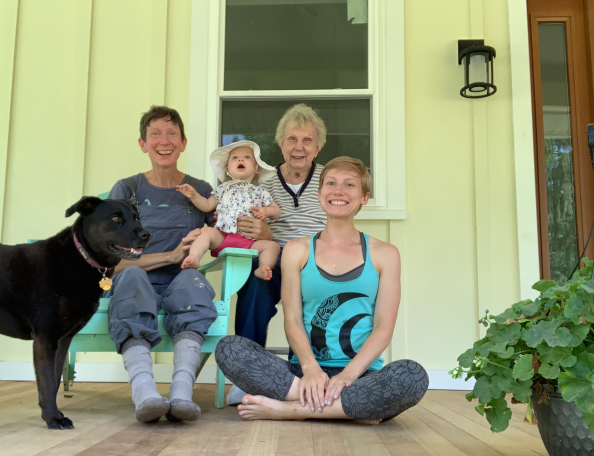 Image courtesy of StellaLou Farm
When Jerome and I came to the School of Living’s Cochranville land trust property, we had many ideas of how we would move forward with regard to renovation, gardening, business, education, and beekeeping. Our visioning had lots of space (some would say, “grey areas”) that invited adaptation, change and growth. It was just such a space that allowed for and invited our family community to StellaLou Farm. We have made many changes to the infrastructure on the land to accommodate the transitions and we are, finally, settling in. Now, my daughter and son-in-law (active members of SOL) and their daughter, little Z, are living in and renovating the old farmhouse at StellaLou. We built a new house for ourselves and my Mom, Big Z (Zora). Mom moved on to the land a few weeks ago and is already lending her hands to snapping the peas and preparing the gooseberries for pie! I love the trend and thinking toward intergenerational community. We have so much to share with each other!
Michaelann Velicky |
|
|
JOHN HERSHEY’S TREES
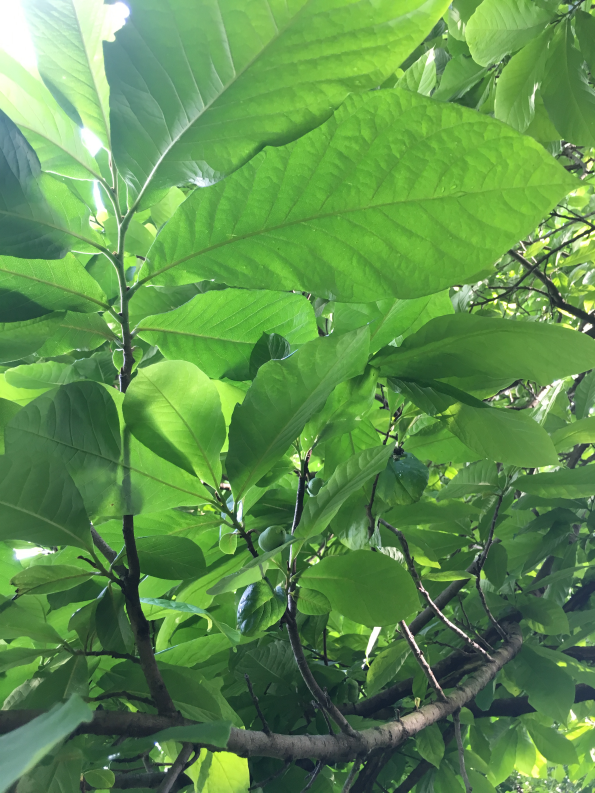 Image courtesy of StellaLou Farm
I am grateful for the opportunity to tour one of the oldest food forests in North America. The forest is on land in Downingtown, PA in an area where there is very active commercial development. The land has been divided and sold since Hershey passed in 1967. Much of the forest is gone or going but there are pockets of mature grafted and seedling tree crops that remain in backyards and the spaces between roads and parking lots. The trees we were fortunate to meet were: persimmon, honey locust, crab apple, pecan, hickory, chestnut, walnut, butternut, yellowwood, mulberry, pawpaw, heartnut, and oak. There is a huge disease resistant American Elm that remains, still providing seeds and seedlings. It is scheduled for removal by PennDot. Hershey’s trees are on private property and there is a strengthening effort to get people to, respectfully, explore and share and learn and preserve. There is a growing interest in using and understanding Hershey’s work as we look for restorative solutions in the face of climate change and difficult challenges in our environment and culture. Hershey’s food forest provides evidence of a self sufficient and sustainable system of agriculture. Dedicated people are leading this effort and some are, also, actively propagating trees from Hershey’s trees before they disappear.
I was led on this walk by one of these passionate people, the very knowledgeable Dale Hendricks from Green Light Plants and a friend of SOL (and, I’m happy to say, mine!) Rick Webb and Adrian Martinez joined us. They are from the revived Downingtown Tree Commission which will serve in leading the township in educational and preservation work for John Hershey’s trees. It was great to talk with these two committed and enthusiastic people. Rick pointed me to this facebook page to see some photographs of the trees. Our walking tour, also, included a group of wonderful people from Camphill Village Kimberton Hills, an intentional community in Pennsylvania, active in sustainable use of land. Tree hugs were given, to be sure! I am linking two articles below. The first is an introduction to John Hershey’s food forest from Philadelphia Magazine. The second is a treasure of information which digs deep into Hershey’s work and the current efforts to preserve the valuable legacy. I highly recommend reading it. For my part, I look forward to buying some tree seedlings and grafted trees from some of the nurseries propagating from Hershey’s seeds to plant at StellaLou Farm. Michaelann Velicky 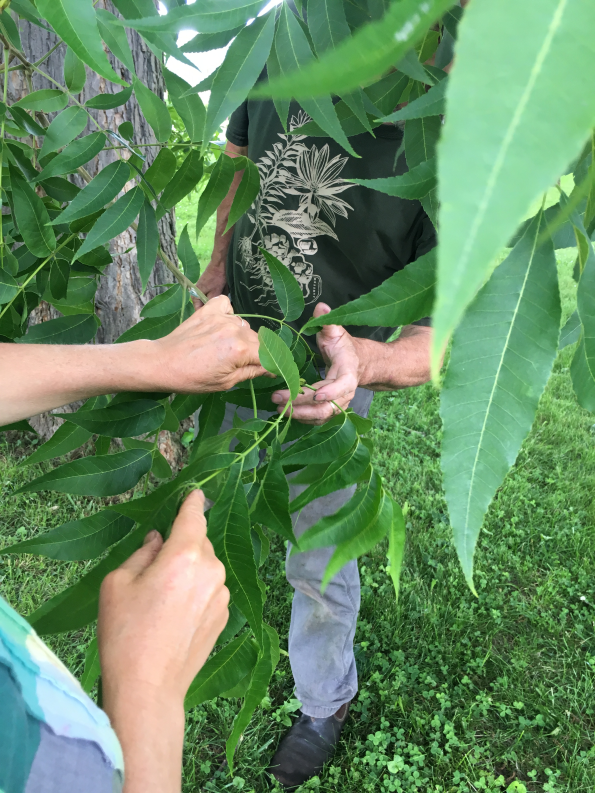 Image courtesy of StellaLou Farm
|
|
BETTER TOGETHER The Coop at StellaLou Farm has been preparing for “Better Together,” which coincides with the SOL quarterly meeting. We’ve been painting signs, clearing spaces, making lists, inviting neighbors, and cutting bamboo. We are excited to spend creative time with our friends and neighbors.
 Image courtesy of StellaLou Farm We look forward to sharing the land and creating music, stories, paintings, weavings, and dances with YOU!
The Coop is looking for a few more items to help the day run smoothly. We would appreciate loans or gifts of:
|
|
|
SOL RECOMMENDS:
|
|
|
BECOME A MEMBER
We welcome your involvement in and support of our work. Follow this link to become a member of School of Living or to renew your membership.
|